Key takeaways:
- Aerial panning shots enhance visual storytelling by providing movement and perspective, immersing viewers in the landscape.
- Understanding drone mapping techniques and integrating technology improves the quality and clarity of aerial shots.
- Essential equipment for drone mapping includes a high-resolution drone, reliable mapping software, and adequate batteries for uninterrupted shooting.
- Effective aerial panning requires careful flight path planning, mastering drone controls, and utilizing optimal lighting conditions for striking images.
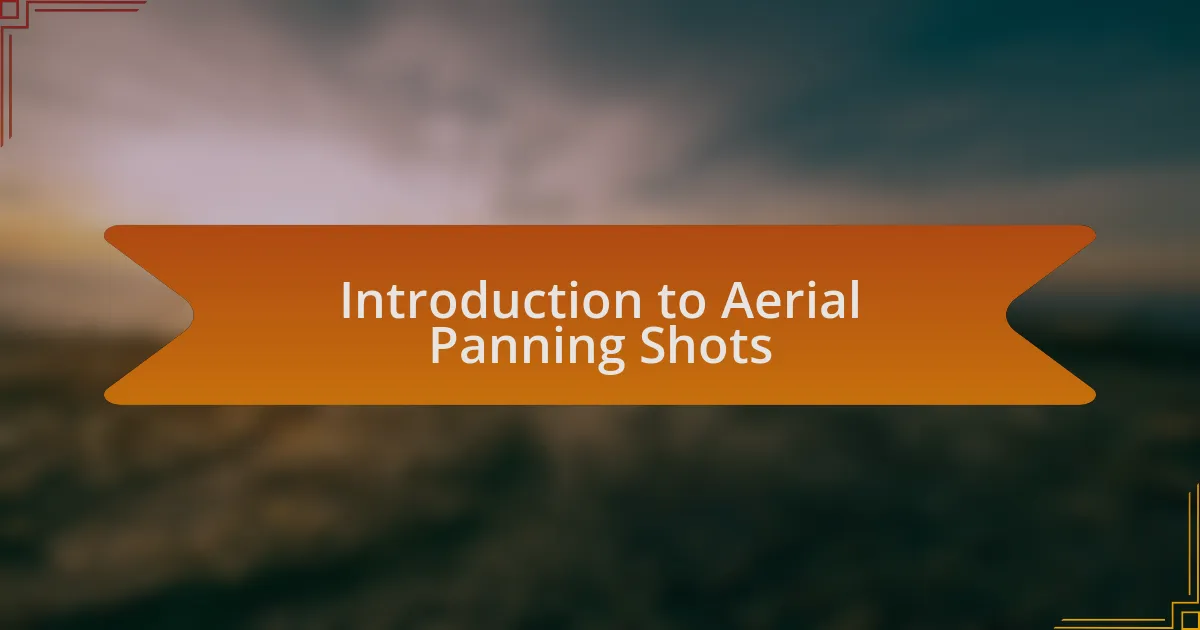
Introduction to Aerial Panning Shots
Aerial panning shots are a captivating technique that can transform an ordinary scene into a breathtaking visual experience. I remember the first time I captured a sweeping panning shot over the lush green hills of Zanzibar; it felt as if I was unveiling the beauty of the landscape in a whole new way. The sensation of watching the world scroll beneath me while gliding through the air was nothing short of exhilarating.
What makes aerial panning so compelling is its ability to convey movement and perspective. I often find myself asking, how can a single shot evoke such a strong sense of place? It’s in the way the camera moves seamlessly with the landscape, immersing viewers in the story being told. This technique connects the audience to the geography, providing a sense of scale and depth that static shots simply cannot achieve.
In my experience, the key to mastering aerial panning shots lies in the deliberate control of your drone’s movements. Each subtle adjustment can drastically change the outcome, and I’ve learned to approach this with both artistry and precision. The thrill of crafting a perfect shot keeps me engaged and constantly seeking new ways to enhance my technique.
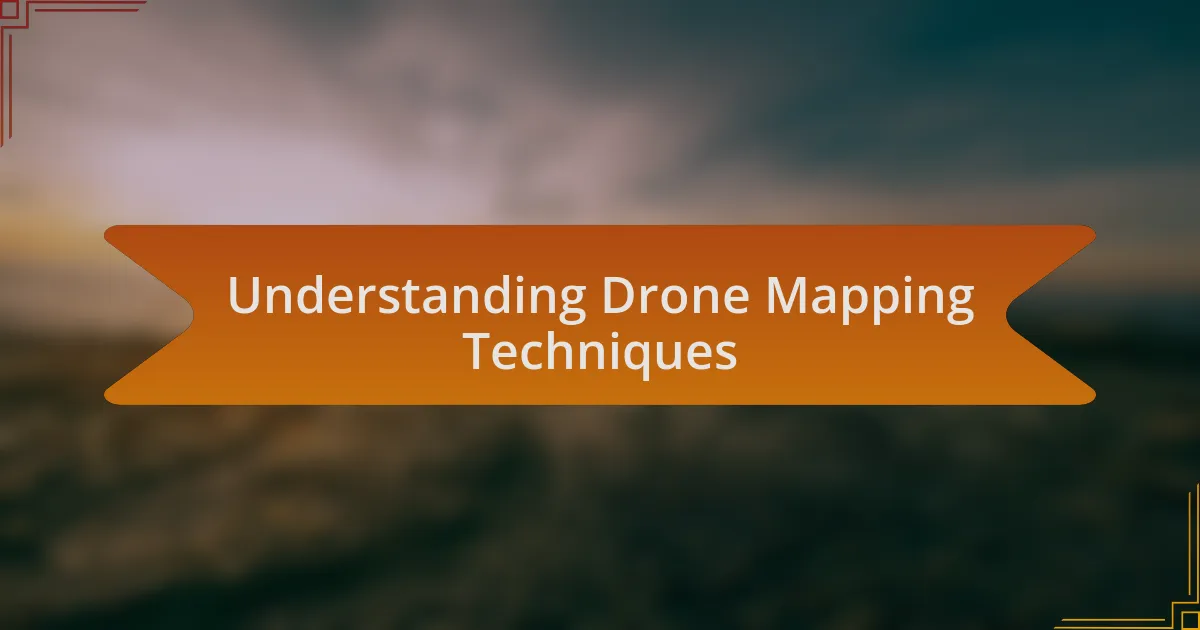
Understanding Drone Mapping Techniques
Understanding drone mapping techniques is essential to achieving stunning aerial panning shots. I often think of drone mapping as the foundation that supports every remarkable view captured from above. For instance, when I first started experimenting with drone mapping in Zanzibar, I realized that clarity in the underlying map greatly enhances the final aesthetic of the panning shot. Each layer of detail matters, like the vibrant colors of the coral reefs or the intricate patterns of the local villages, which all tell a unique story.
The integration of GPS technology with aerial imagery exemplifies how drone mapping simplifies complex perspectives. I remember a session where I was exploring the coastline; the precise mapping allowed me to plot my flight path effectively, avoiding obstacles while ensuring a smooth pan. It’s that blend of technology and artistry that truly elevates the visual experience, don’t you think? By harnessing these mapping techniques, I was able to create dynamic transitions that kept viewers engaged, almost like a seamless journey over the landscape.
Each drone mapping technique serves a distinct purpose, and understanding these nuances gives you an edge as a creator. I often reflect on my trial and error process; some shots taught me about the importance of elevation and angles. When I hit the right combination, the panning shots came to life, showcasing the intricate beauty of Zanzibar in a way I had only dreamed of. Isn’t it fascinating how a little technical knowledge can make a significant difference in storytelling through visuals?
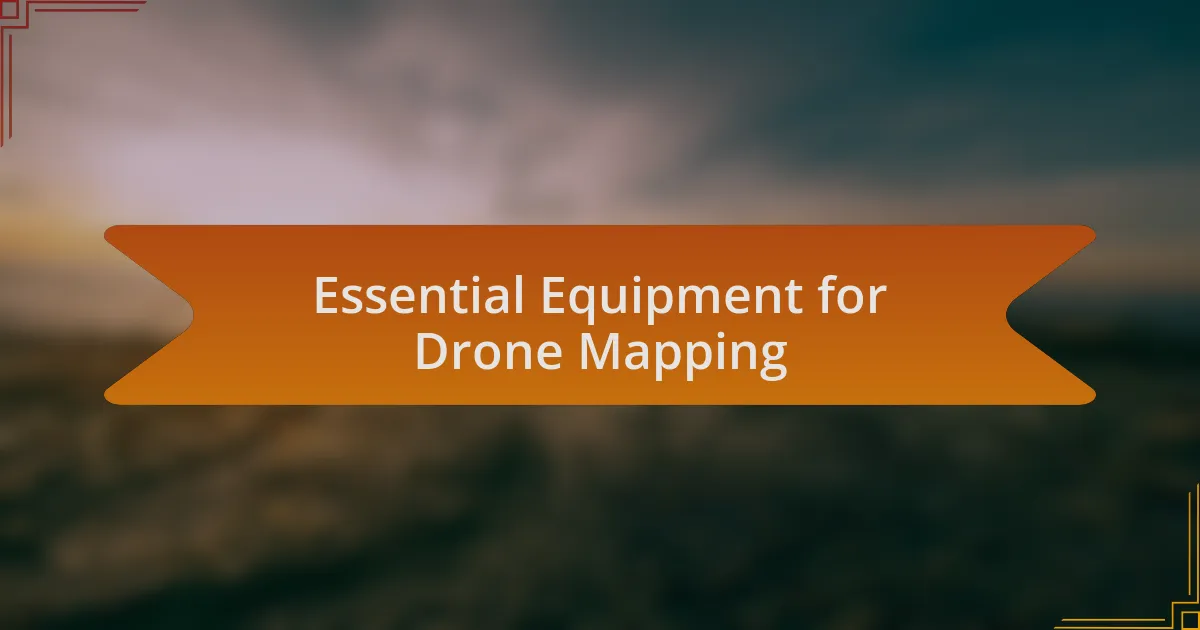
Essential Equipment for Drone Mapping
When it comes to drone mapping, the most crucial piece of equipment is undoubtedly the drone itself. I vividly remember my first flight with a higher-end model equipped with a high-resolution camera; the difference in image quality was astonishing. Having the right drone can make all the difference, especially in capturing the vibrant landscapes of Zanzibar. Which features do you prioritize when selecting a drone? For me, it’s all about balancing camera quality, flight time, and stabilization capabilities.
Another essential part of the equation is software for mapping. I’ve found that using a reliable stitching software can turn a series of images into a cohesive map, which enhances the aerial shot’s depth. The moment I discovered how easy it was to create orthomosaic maps, I felt empowered to explore more ambitious panning shots. Do you ever wish you could effortlessly visualize your flights? Trust me, investing in good software saves time and frustration, allowing more focus on creativity rather than technical hassles.
Lastly, never underestimate the importance of batteries and other accessories. I recall a day of mapping along the coast when a dead battery abruptly cut my session short. It was a frustrating reminder of how preparation is everything. I now carry extra batteries and replace any worn-out ones regularly, which helps avoid those all-too-common interruptions. Keeping an efficient packing list ensures that I’m ready to capture every moment, no matter how unpredictable the conditions can be.
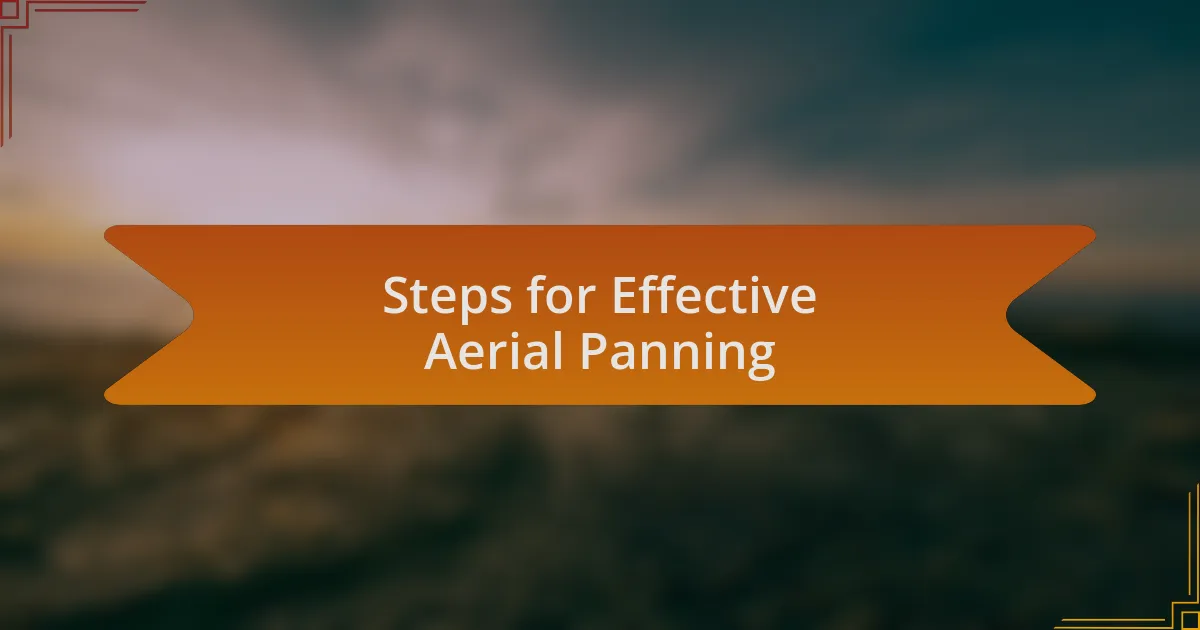
Steps for Effective Aerial Panning
To achieve effective aerial panning, the first step is carefully planning your flight path. I remember one time in Zanzibar, I mapped out a route that skimmed along the coastline, ensuring the movement was fluid and visually appealing. Have you ever taken a moment to envision how the composition plays out in the sky? Taking the time to visualize your flight can dramatically enhance the final result.
Next, focus on mastering your drone controls during the panning motion. During one of my sessions, I practiced slow, steady movements to prevent jerks that could ruin the shot. I think of it as a dance—the smoother you are, the more graceful the outcome. Have you tried different panning speeds to see how they affect your shots? I learned that experimenting can help you find the sweet spot that best captures the essence of your surroundings.
Lastly, don’t forget to take advantage of the golden hours. My fondest memories of capturing Zanzibar’s landscapes were during sunrise when the light transformed everything, giving my shots a magical quality. Have you noticed how the right lighting can elevate ordinary scenes? I find that timing my flights around these moments can yield breathtaking results, setting my work apart from the rest.
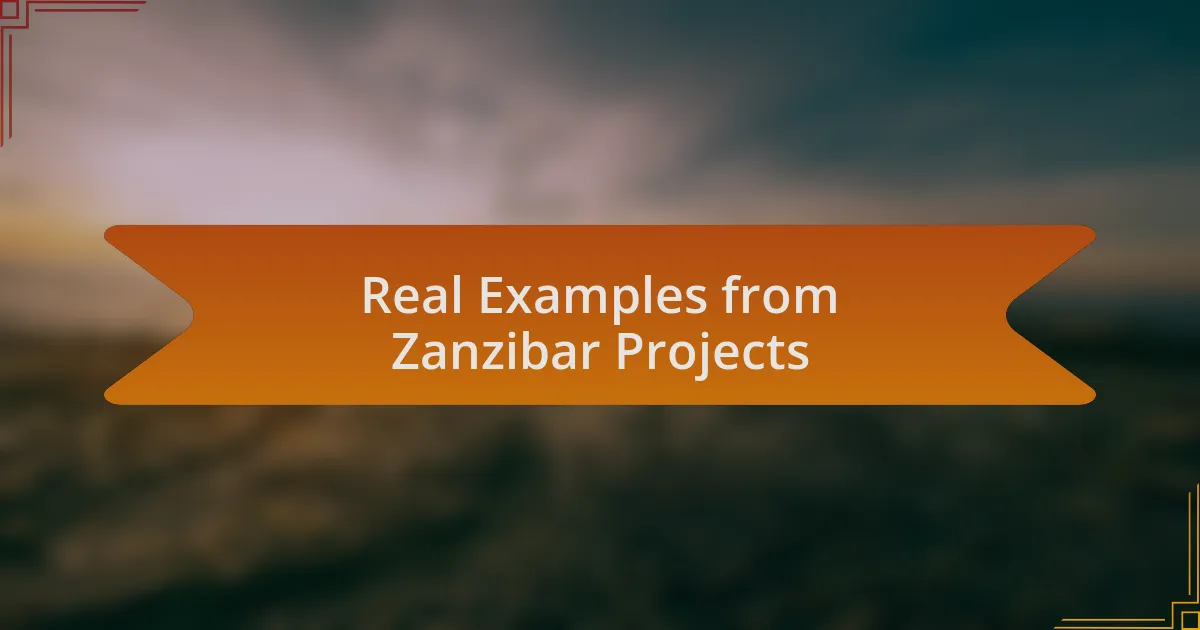
Real Examples from Zanzibar Projects
One of my recent projects in Zanzibar involved mapping a vibrant local market bustling with activity. As I soared above, the aerial panning revealed a tapestry of colors—bright fabrics, fresh produce, and the lively energy of countless interactions. The joy I felt capturing such a dynamic scene was unparalleled. Have you ever seen a place come alive from above? That perspective truly showcases the heart of Zanzibar.
During another shoot, I had the chance to film the breathtaking sunset over Stone Town from an elevated angle. As the sun dipped below the horizon, painting the sky in hues of orange and pink, I executed a slow and deliberate pan that encapsulated the magic of that moment. I recall feeling a rush of excitement, knowing that I was not just documenting a scene but also sharing an experience. Can you imagine how a gentle panning motion can immerse viewers in such beauty?
In yet another project, I focused on the unique architecture of the historic buildings in Zanzibar. By coordinating my aerial movements with the lines and forms of the structures, the panning shots created an artistic juxtaposition of modernity against rich cultural heritage. Reflecting on that experience, I realized how thoughtful framing changes our perception of a place. Have you considered how the angle of your shot can reveal stories hidden in plain sight?